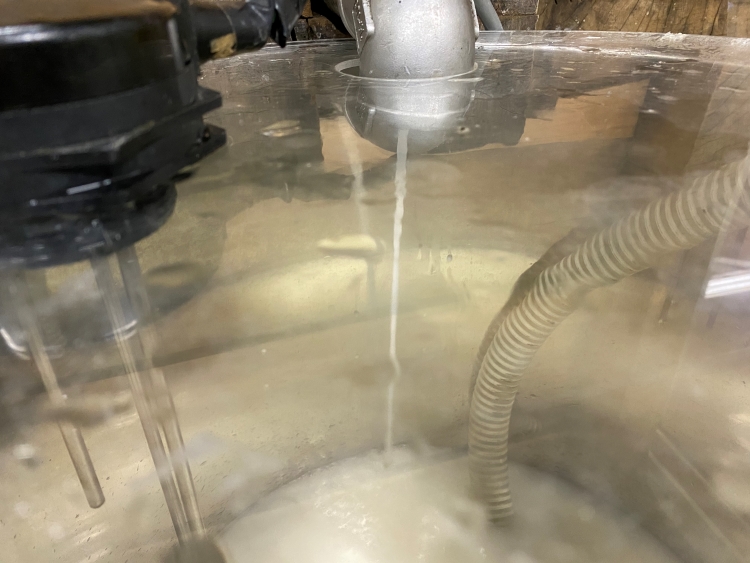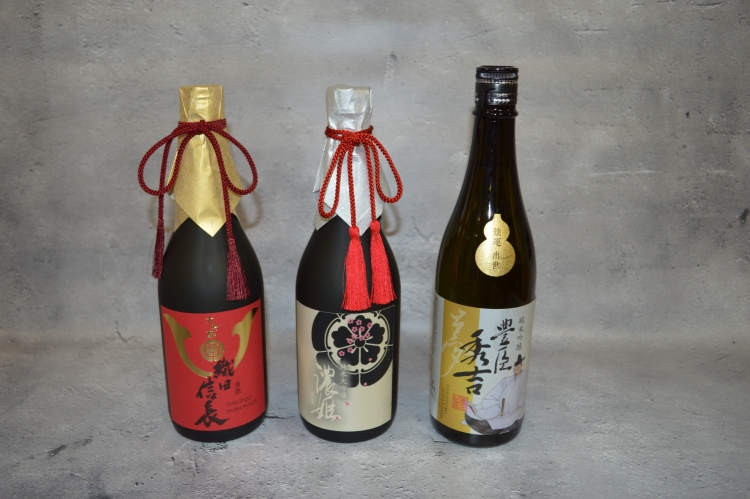ReservationSearch and reserve rooms
Click here to confirm, change or cancel your reservation
Shinkansen accommodation plan
提携法人専用予約
2024.05.28
A sake brewery established in the Edo period that specializes in water and brews sake at Gifu Station

Takeyama Sake Brewery was originally founded in Chaya Shinden along the Nagara River at the end of the Edo period and is currently in its fifth generation. Having often suffered from flooding by the Nagara River, the brewery moved to Shimizu-cho in 1877 in search of good quality water. As the name suggests, the area is rich in groundwater and has good quality water, and the brewery was named "Nihon Izumi" (Japan Spring) as a spring that Japan can be proud of.
"Shiki Brewing" where you can enjoy freshly pressed sake all year round
"A little over 20 years ago, we rebuilt the building when the area around the station was redeveloped. By building a brewery in the basement of the building, the temperature was stable, which allowed us to brew sake all year round and enjoy freshly pressed sake all year round," says Production Manager Takeyama Takahiro.
He runs the brewery together with his younger brother Shohei, who is the sales manager. Normally, sake is brewed in large tanks all at once from the cold winter months through to early spring, but by brewing underground, they can brew sake all year round, making it possible to frequently brew fresh sake in small tanks.
"That's why we don't have a cedar ball to let people know that the new sake of the year is ready," says Takeyama with a laugh.

Production manager Takahiro Takeyama (right) and sales manager Shohei Takeyama (left)
The sake brewing process can be broadly divided into the following steps:
[Steamed ginger]
First, the sake rice is soaked in water, drained, and then steamed in a large steamer called a koshiki.
[Cooling]
The steamed rice is quickly spread out by the brewers and cooled down to a constant temperature.
[Koji making]
The cooled steamed rice is then moved to the koji room where the koji mold attaches to the rice and grows.
[Oar insertion]
The yeast starter and mash are added to the steamed rice and stirred with a paddle to dissolve the mash and balance the fermentation process.
[Preparation]
Finally, the yeast starter is placed in a tank and koji, steamed rice, and water are added in three batches to begin fermentation (three-stage brewing).
[Preparation]
Once the fermentation period is over, which lasts about three weeks to a month, the mash is pressed to extract freshly made sake.
Nihon Izumi is particularly particular about the water they use to steam the sake rice and during brewing.
They pump up underground water from the Nagara River from their own well 100m underground. The water is super soft and gentle, which makes for a gentle sake. "Hard water, which is rich in minerals, is actually easier to make sake with, as the minerals act as nutrients for the yeast and encourage active fermentation. As a result, sake brewed with hard water is generally dry, while sake brewed with soft water has a soft and gentle taste," says Takahiro, the production manager.
Whenever possible, they use "Hida Homare," a sake rice produced in Gifu Prefecture, and are committed to using locally produced yeast and water.

Brewed with Nagara River underground water pumped up from a well 100m underground

During the preparation process, steamed rice is fermented to create moromi.
"Funakuchitori" is the ultimate unpasteurized, unfiltered sake.
Another specialty of Nihon Izumi is "Funakuchitori", a type of unpasteurized sake slowly pressed out of a wooden vat. Using four-season brewing, they produce this unpasteurized sake all year round, straight from the vat, unfiltered and unpasteurized.

The juice is extracted using pressure and time in a traditional wooden vat.

Unpasteurized sake squeezed out from the vat
Originally, pasteurization was a process to sterilize sake at low temperatures by heating it to around 60 degrees, preventing spoilage and deterioration and stabilizing the quality of the sake. At the same time, it also serves to stop the activity of yeast. By not pasteurizing the sake, the live yeast also becomes the source of the flavor of unpasteurized sake, resulting in a fresh taste like freshly picked fruit that is distinct from heated sake.
The standard series are named after warlords from the Sengoku period who have ties to Gifu: "Oda Nobunaga," "Toyotomi Hideyoshi," and "Nohime." The sakes named after these three warlords are registered trademarks of Nihonsen.

Sengoku Warlords Series
Nihonsen offers free tours of the sake brewery with tasting. You can experience the sake brewing process, named after a military commander, using Gifu's water, rice, and yeast, in the basement of a building just a minute's walk from Gifu Station. Reservations can also be made at the front desk of HOTEL RESOL GIFU.
Nihon Izumi Sake Brewery Co., Ltd.
Address: 3-8-2 Kano Shimizu-cho, Gifu City, Gifu Prefecture, 501-5303
Access: 1 minute walk from the south exit of JR Gifu Station
HP: http://www.nihonizumi.co.jp/
SNS: https://www.instagram.com/tabi.factory/
*For details on business hours and holidays, please check the link above.




